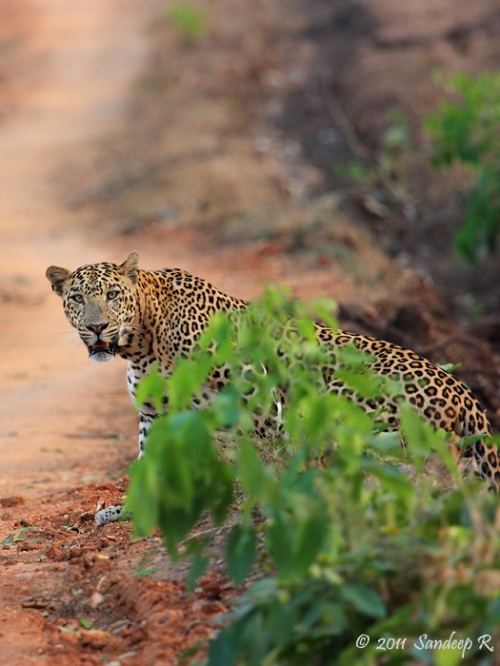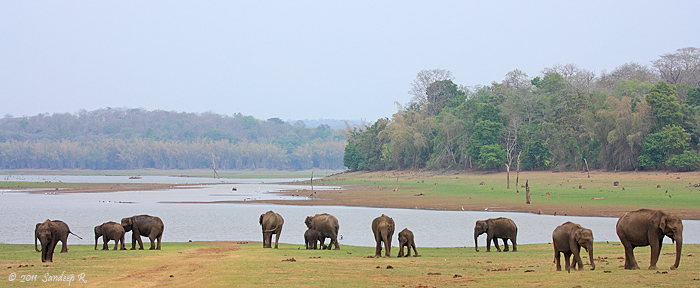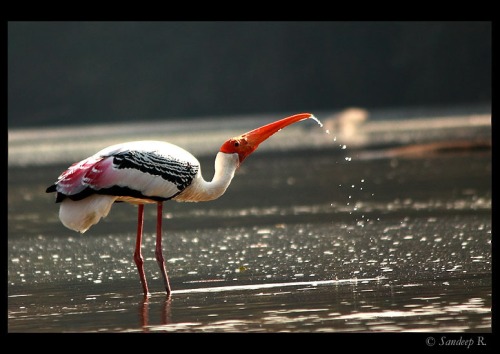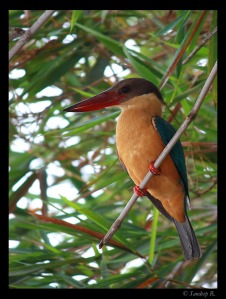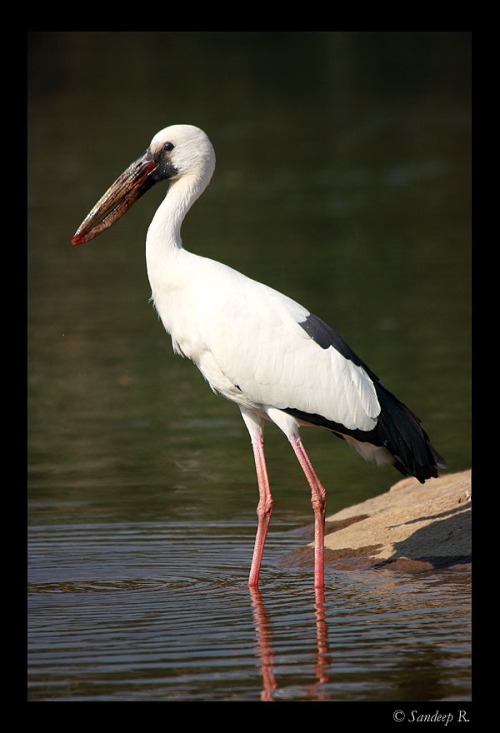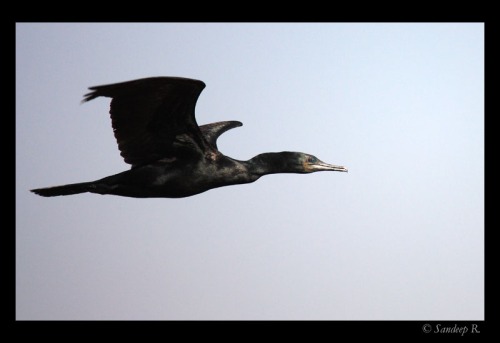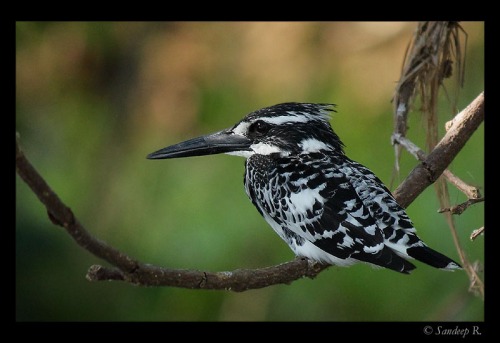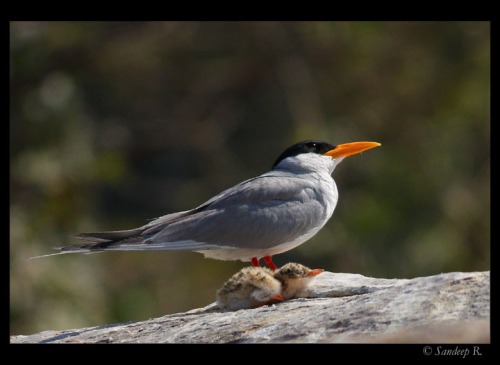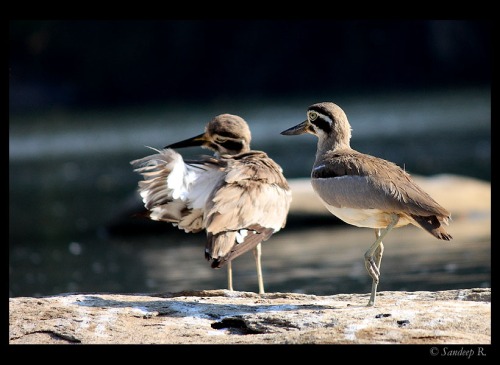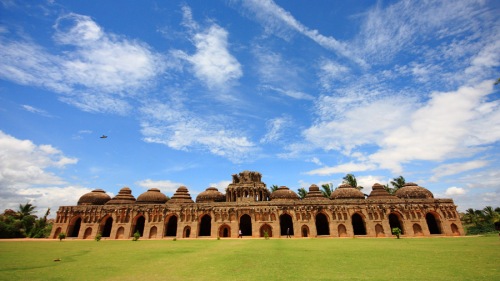 Elephant Stables at Hampi, Karnataka
Elephant Stables at Hampi, Karnataka
One of the richest empires that ruled the Southern India, the Vijayanagara Empire, had its capital around present day Hampi. What remains today of the once glorious state is the UNESCO world heritage sites, ruins of the empire. Virupaksha temple, Elephant Stables, Lotus Mahal, Vittala Temple, Stone Chariot, the musical pillars and few other monuments amidst the Thungabadra river and the rocky arid terrain give fantastic opportunity for photography.
Neelima, one of India’s best travel and landscape photographer, accompanied me and Dilip for a weekend escapade to Hampi. The best option to reach Hampi from Bangalore is through train to Hospet, and taking a cab from Hospet to Hampi. Given Hampi’s popularity and unavailability of train tickets left us with no choice but taking an overnight bus from Bangalore. The bumpy roads for latter part of the journey left me with little sleep and we arrived at 5am. There are many options for accommodation available, on either side of the river Tungabadra. We decided to stay at a shack on ‘the other side’ of the river. This meant taking a boat across the river every time we set out. Each of the historical sites are anywhere between 2 to 10 miles (or ~3 to 15km). It is possible to visit most of the prominent monuments in 2 days. Hiring a cab, renting a bike or a moped are the different options. We rented a moped.
 Stone Chariot at Vittala Temple, Hampi
Stone Chariot at Vittala Temple, Hampi
The temple complexes and the rocky landscape provide one the picturesque places for photography. Despite our outing in June, at the end of summer and onset of Monsoon, we were lucky to have splendidly beautiful blue skies. Started out with breakfast at the popular Mango Tree restaurant – cuisine is predominantly western. Our first day stops included Virupaksha temple and few unrecognized ruins at first. Returning to the Mango Tree for lunch.
In the evening, we visited the Vittala Temple. This is one of the most interesting monuments at Hampi. I still had the memories of visiting this place decades ago. The stone pillars carved on the mantapa of the temple produces 7 notes of music. It is simply fascinating to see and hear music from gently tapping the stone pillar. However, we were not let to tap the pillars on the main complex. The deterioration caused by millions of tourists visiting had already waned down the thickness of the pillars from what I had seen a decade earlier. There is only one pillar that is allowed for demo. Our guide showed us that and it was equally impressive.
 Stone pillars at the Vittala temple complex produce musical notes on tapping it gently
Stone pillars at the Vittala temple complex produce musical notes on tapping it gently
Second day plan was to visit the Lotus Mahal and the Elephant stables at the Zenana Enclosure. The image you see at the top is the elephant stable. To get the size reference, see the man walking at the center. After lunch, I insisted on visiting Daroji for watching Sloth Bears. We had to ride ~30km. Through the hilly terrain, we reached the Daroji Bear Sanctuary. Birding in the late afternoon was average at best. Sloth bears visit for the jaggery lick on the rocks. We settled at a watch tower at 4pm. However, the bears were not expected until dusk depending on our luck. After waiting for close to an hour and half, we decided to return since we needed to catch the last boat across the river at 6:30pm. I was not fortunate to photograph sloth bears at Daroji and gives me reason to return.
 Lakshmi Narshima Statue close to Virupaksha Temple
Lakshmi Narshima Statue close to Virupaksha Temple
Krishnadevaraya was one of the prominent rulers of Vijayanagara empire. There are legends of gold and diamond ornaments being sold on streets by hawkers during his reign, signifying the wealth during the period. After the Sultans of Bijapur defeated the last emperor of the dynasty, they looted the wealth in the capital and destroyed the hindu temples, monuments and structures. Today, this stands in ruins and as popular destination for travelers.
 Ruins are reconstructed, restored and preserved by ASI (Archaeological Society of India)
Ruins are reconstructed, restored and preserved by ASI (Archaeological Society of India)
Check out the landscape images from Hampi here.

